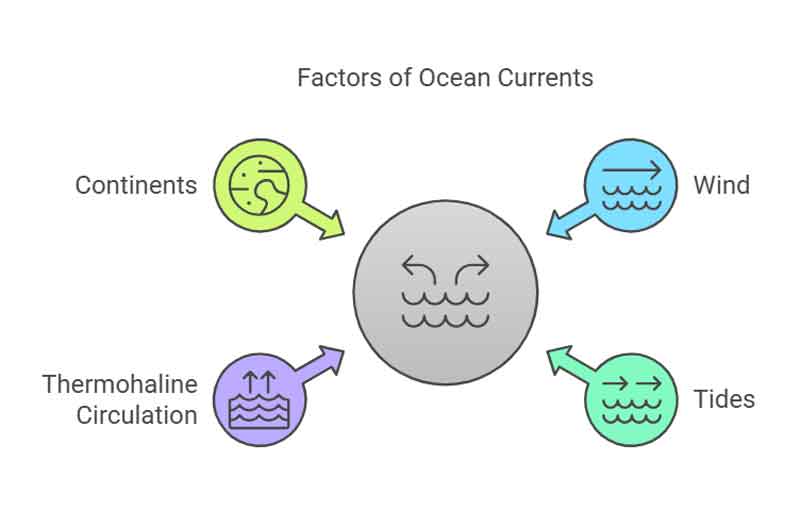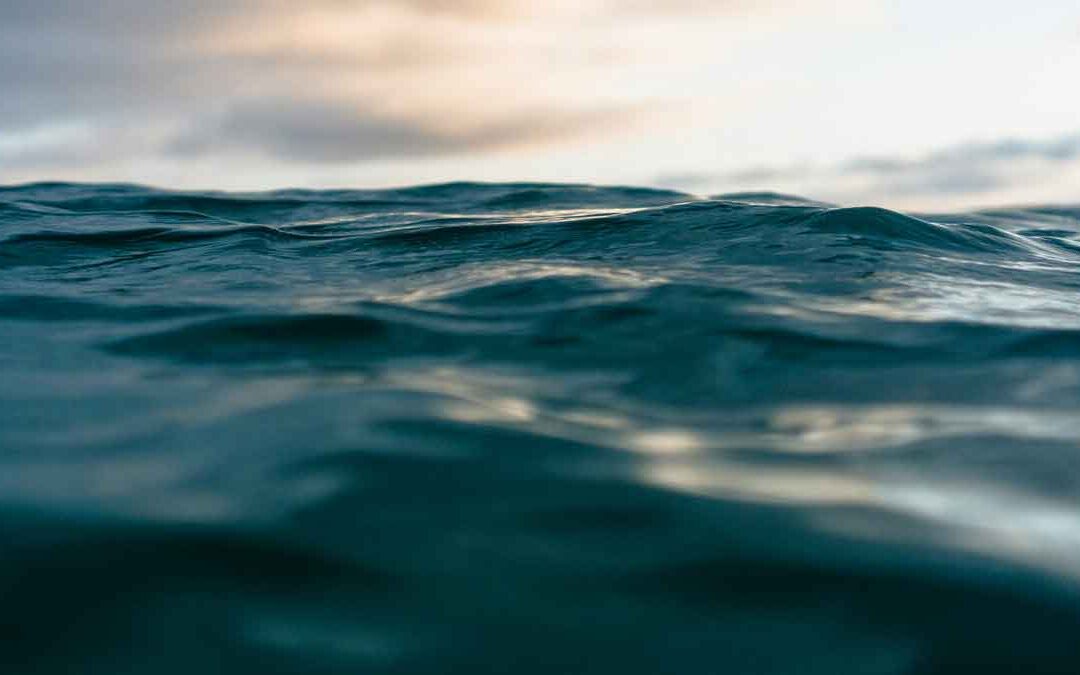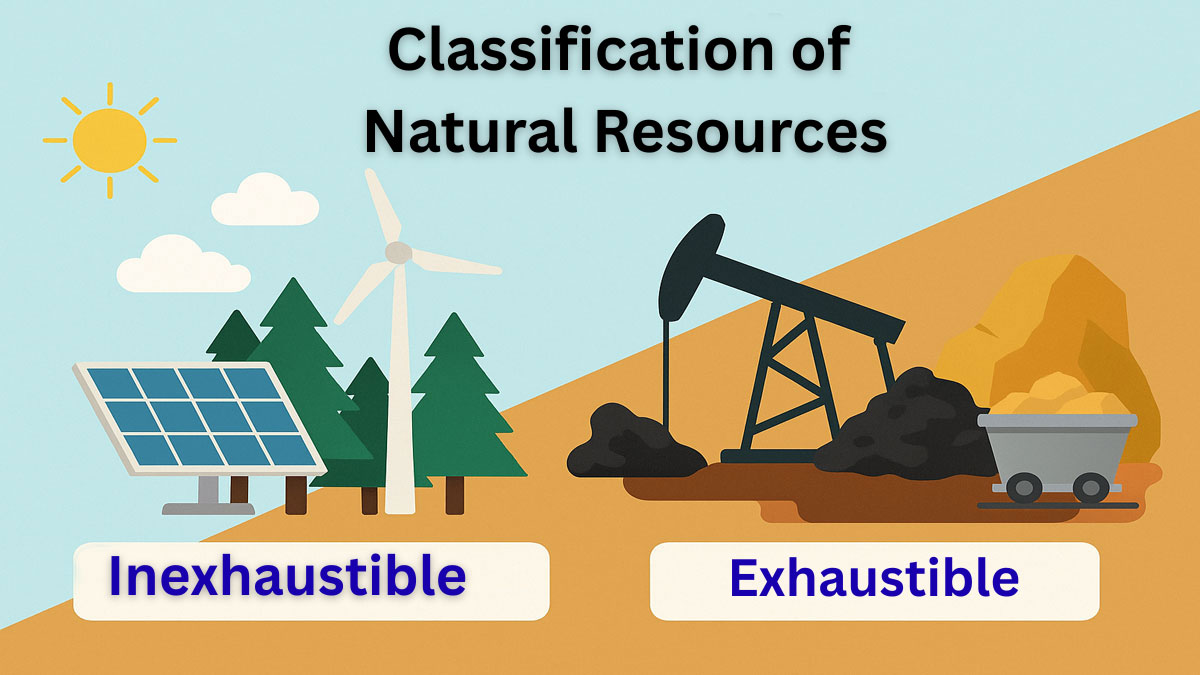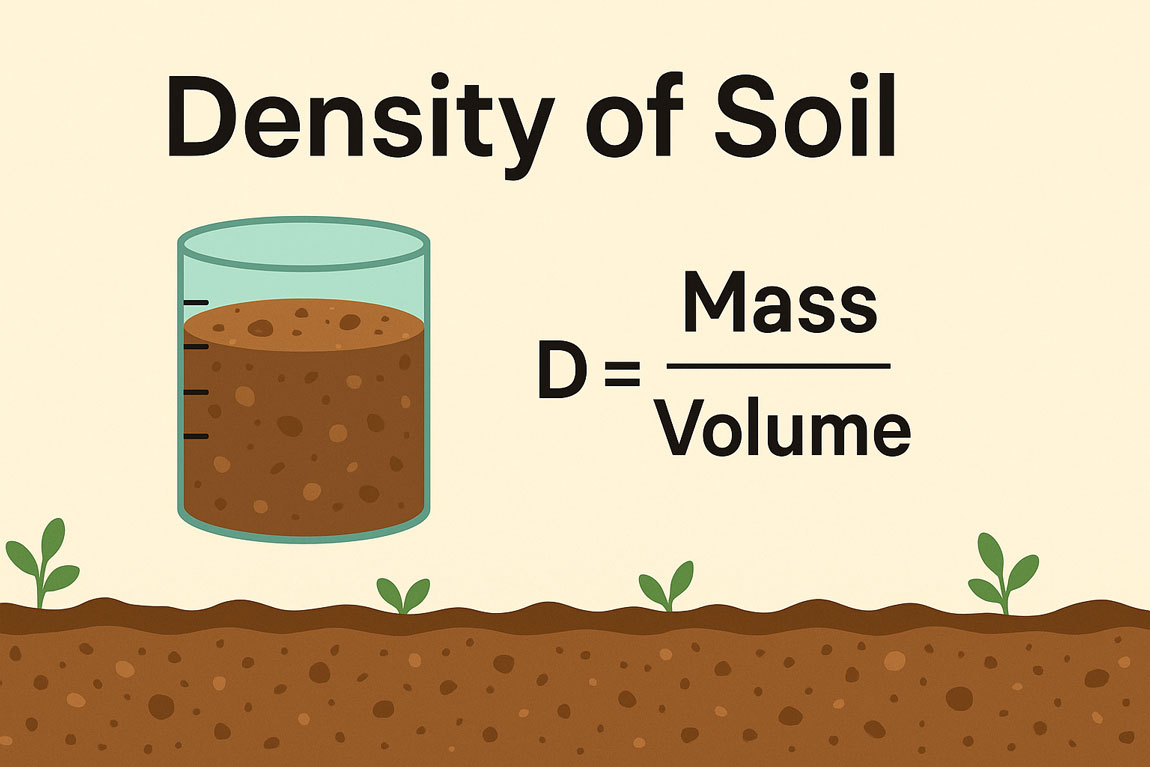Ocean Currents can be generated by wind, density differences in water masses caused by temperature and salinity variations, gravity, and earthquakes. However, the factors of ocean currents are primarily influenced by four main elements.
Factors of Ocean Currents:
Factors that drive ocean currents are,
- Wind
- Rise and fall of the tides
- Thermohaline circulation
- Continents

Wind:
When the wind blows persistently in a particular direction, the wind stress on the sea surface causes the water in the upper layer to move bodily, forming a current. These wind-induced currents may be permanent in regions with strong prevailing winds.
Water Density:
Another major factor in the creation of currents is water density, which is caused by the amount of salt in a body of water and its temperature. Water with a higher salinity or colder water is more dense and likely to sink. Sinking water pushes the water below it up. The combination of sinking and rising in the same area causes a current.
Ocean bottom topography:
Water contours to the topography of the ocean floor or bed. If the ocean bottom “drops out, “like in a valley or trench, the moving water will move downward. If there is a rise in the ocean bottom, like a ridge or mountain, the water moving along it will be forced upward.
Coriolis Effects:
When a rotating object collides with another moving or stationery force, it creates a new motion. The earth’s rotation creates two currents: one, a clockwise movement of water in the northern Hemisphere; the other, a counter clockwise movement of water in the southern hemisphere.






